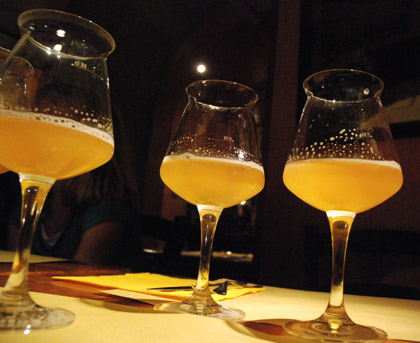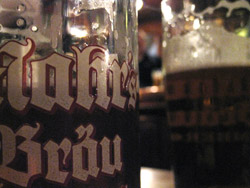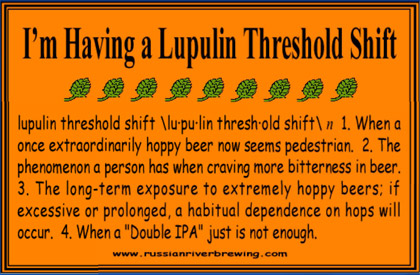In fact it is Sunday as I post this, but by the time you read this Monday we should have the RV pointed south. Might not see you until the New Year. If that’s the case celebrate carefully . . .
– Will the economic slowdown dampen sales of small-batch beers? Common sense says yes.
So I read Jeff Alworth’s “When Restaurants Die” with particular interest. The story is about the restaurants of Portland, Oregon. But it’s Oregon, and it’s Jeff’s blog, so of course there is a beer ingredient.
I worry that if the best restaurants begin to die off in Portland (we’ve lost 20 this year, including renowned Genoa), the creative minds who founded them will leave. The erosion of talent in the restaurant scene is just generally bad. I don’t know that it will have immediate or long-lasting influence on breweries.
Portland has been the poster city for craft beer success. If there’s a problem there then bigger problems seem likely everywhere else.
– I did not write this. It comes from Pete Brown. I’m going to say that twice because while blogs are a wonderful for pointing to well written words sometimes people end up giving the second blog (in this case mine) credit. I wish I’d written this, but I didn’t.
It comes from Pete’s year-end roundup, interesting, though more so if you live in the UK.
Any writer writes because they have a need to be listened to, and whatever that says about our psyches and frail egos, I’m gratified that people read this blog and link to it and recommend it. I apologise to anyone I’ve offended on here – I try not to. I hope you’ve enjoyed reading most of what I’ve written, and wish you a happy and prosperous 2009.
Something of an answer to the question Andy Crouch raises about why we blog. Repeat, I wish I’d written the paragraph. I did not.
– Thanks again, to Alan and Jeff for the Yuletide 2008 Photo Contest. Winning a hat was cool, but looking at all those photos was the real fun.
– Don’t forget The Session #23 hosted by Beer and Firkins on Friday. Include a drinking note if you can, because we’re back on the road and I’m looking for interesting local beers to try between now and August.

 Instead I’ll point you to a
Instead I’ll point you to a 